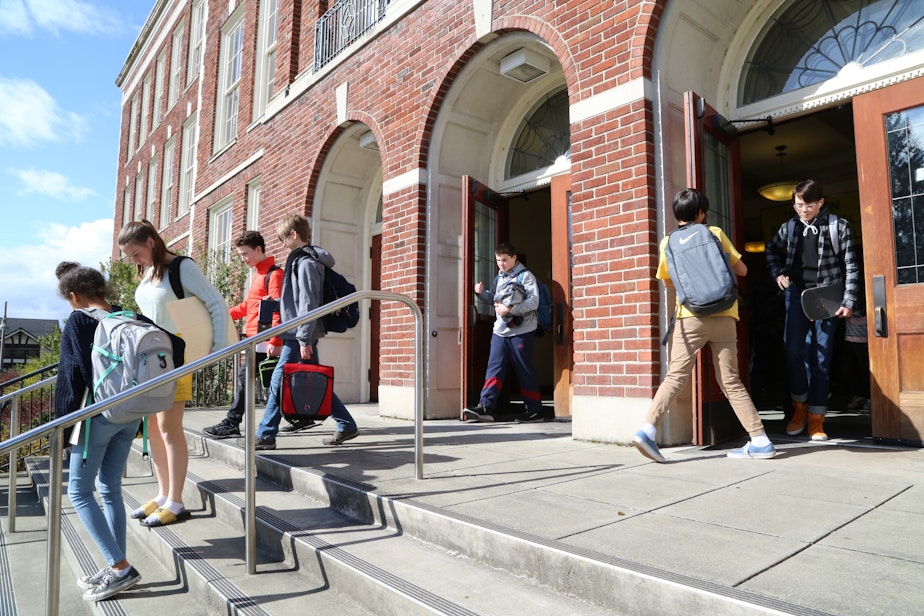Student homelessness in Seattle schools jumps by a third in 2023

The number of students in Seattle Public Schools experiencing homelessness has spiked over 30% in the past year.
As of Oct. 5, the district reported 1,903 of its students are currently — or have been — homeless since the school year began in September. That’s 456 more students than this time last year.
In the wake of the pandemic, more families are struggling to afford rising rents or to meet landlords’ income requirements, said Jeanea Proctor-Mills, who heads the district’s program for unhoused students.
“It’s like, ‘What the heck?’ Like where am I going to find three times my monthly income when, you know, I’m barely making ends meet with my two kids?” Proctor-Mills said. “It’s really challenging, and I really feel for the families.”
Statewide, more than 36,000 students experienced homelessness sometime during the 2022-23 school year, according to data from the Washington Office of Superintendent of Public Instruction. It’s a figure that has largely been on the rise over the last decade, but dipped during the pandemic while schools were closed or remote and struggled to identify unhoused students.
A new report from Building Changes, based on school-level data, puts the count of Washington students who experienced homelessness in 2021-22 at nearly 40,000 — significantly higher than the state’s count of about 32,000. That means the Evergreen State had the sixth-largest number — and rate — of homeless students across all 50 states.
Sponsored
The report, released Thursday, also found that students of color are significantly more likely to experience homelessness in Washington. In 2021-22, 64% of unhoused students were students of color, according to Building Changes, a nonprofit fighting homelessness.
In addition, the report reveals academic outcomes among unhoused students remained far below their peers who were housed.
For example, the report finds fewer than a quarter of students experiencing homelessness were proficient in English-language arts in 2021-22 state tests. Meanwhile, more than half of housed students were considered proficient.
And math was the same story. Only 14% of unhoused students met standards, compared to 40% of their housed peers.
“Young people already have an enormous amount of pressure between school, relationships, social media, and what is happening in our world,” Daniel Zavala, executive director of Building Changes, said in a statement.
Sponsored
“Imagine not knowing where you are going to sleep at night," Zavala said. "This reality for so many makes it nearly impossible to show up every day ready to learn and focus on your homework.”
While Building Changes said in its report that some progress has been made to combat student homelessness at the state and federal level, the organization said more public funding and private contributions from philanthropy, corporations, and community members are needed given the breadth of the crisis.
In Seattle, Proctor-Mills says it’s a challenge for the district to keep up with families’ rising needs.
She said the district helps struggling families with things like transportation and meals, and any fees related to school — for field trips, school supplies, athletics, or other extracurriculars. The district also connects families with health care and other social services. When the district can afford it, the district also puts families up in temporary housing.
Even though resources are limited, Proctor-Mills said the district is on track to serve more unhoused students this school year.
Sponsored
“We do the best that we can with the resources that we have and we exhaust every option,” she said, “because our goal is to make sure that our kids aren’t on the street as much as we can help it.”




